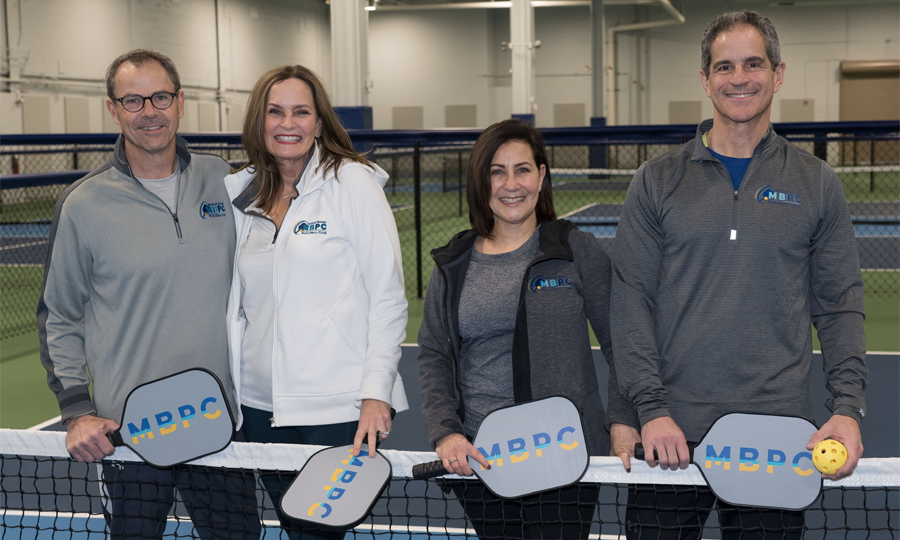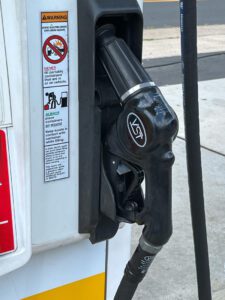 Regular gas prices across Mercer County are $1.10 more per gallon than one year ago, according to AAA, and the current cost per gallon is still amongst the highest statewide. Though we’ve seen prices dip a bit this month (prices were seen as low as $4.07 in Lawrence and W. Windsor) they continue to fluctuate. The cost of gasoline is having a rippling effect on our economy and is one of the main contributors to our current 4-decade high inflation.
Regular gas prices across Mercer County are $1.10 more per gallon than one year ago, according to AAA, and the current cost per gallon is still amongst the highest statewide. Though we’ve seen prices dip a bit this month (prices were seen as low as $4.07 in Lawrence and W. Windsor) they continue to fluctuate. The cost of gasoline is having a rippling effect on our economy and is one of the main contributors to our current 4-decade high inflation.
THE REAL COST OF GAS
“It’ll go down a little, then up the next day. I recently had it go up 10 cents one day, then up again 20 cents the next, then 2 days later it went down 3 cents,” recalls Willie Rosso, owner of Princeton Sunoco on Nassau Street. “I don’t control the price. It’s the oil companies and they’re making the biggest profits ever.”
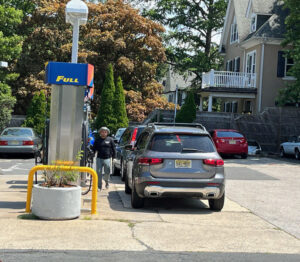 For individual station owners like Rosso, the fuel price is determined long before it arrives to fill their station tanks. There is zone pricing, higher in town and lower on highways, and the cost per gallon charged to customers is then based on what it cost at delivery. Sometimes only 10 cents per gallon goes into station owners’ pockets. At the end of July, Exxon Mobile, Chevron and Shell all shattered their profit records while the high cost of fuel in America was raising delivery costs and changing the way people live and do business.
For individual station owners like Rosso, the fuel price is determined long before it arrives to fill their station tanks. There is zone pricing, higher in town and lower on highways, and the cost per gallon charged to customers is then based on what it cost at delivery. Sometimes only 10 cents per gallon goes into station owners’ pockets. At the end of July, Exxon Mobile, Chevron and Shell all shattered their profit records while the high cost of fuel in America was raising delivery costs and changing the way people live and do business.
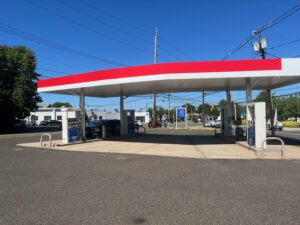 “I have a lot of people I don’t even see any more like Door Dash drivers, they’d come by every single day, Uber drivers, landscapers,” shares Zakaria Bentaleb, who owns Noor & Son’s Gas Station with his father and sister, the Exxon station at Rt. 206 and Cherry Valley Road. “It’s not worth it for them to fill up $700 worth of gas, for example, for a landscaper that doesn’t get $700 for the day. Everybody is operating on smaller amounts – if he had 6 motors, he’s operating out of 2. If he had 7 trucks, he’s operating out of 3.”
“I have a lot of people I don’t even see any more like Door Dash drivers, they’d come by every single day, Uber drivers, landscapers,” shares Zakaria Bentaleb, who owns Noor & Son’s Gas Station with his father and sister, the Exxon station at Rt. 206 and Cherry Valley Road. “It’s not worth it for them to fill up $700 worth of gas, for example, for a landscaper that doesn’t get $700 for the day. Everybody is operating on smaller amounts – if he had 6 motors, he’s operating out of 2. If he had 7 trucks, he’s operating out of 3.”
CUSTOMER REACTIONS TO HIGH PRICES
Rather than filling up as most customers had in the past, Rosso and Bentaleb say they are often seeing people put just $20 in their tanks, some are even just coming over and pumping $5 to get by. Though the roadways are busy, by gas station standards people appear to not be driving as much, whether by choice or situation. Princeton Perspectives recently questioned people about the ways inflation is affecting them and several shared that the current state of inflation is causing them to think more when they fill up their tanks.
“I put a financial limit when I fill up at the gas station. Otherwise, it feels out of control, stressful, and anxiety-inducing. I guess it’s my way of exerting control,” one person shared anonymously. “How much do I feel I can actually spend on gas this week? I try to limit my trips where I can. Do I really need to go to the store? Can I work from home today?”
This is a mindset we also heard from others.
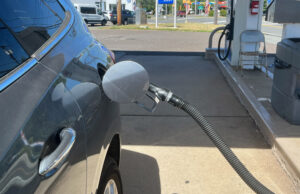 “I fill up only every 2 weeks when I get paid. So, I have to budget where I go. Long trips or coming and going are not an option now. It is like $80 to fill up when I used to pay $40,” explains Princeton local, Ana P. “It is also very important to note that these prices don’t help with summer activities like taking my kids to the beach etc., because you know it will be very costly for outings like that.”
“I fill up only every 2 weeks when I get paid. So, I have to budget where I go. Long trips or coming and going are not an option now. It is like $80 to fill up when I used to pay $40,” explains Princeton local, Ana P. “It is also very important to note that these prices don’t help with summer activities like taking my kids to the beach etc., because you know it will be very costly for outings like that.”
Nearly 30% of the 85 people we surveyed shared they are conscious about gas prices, but they aren’t yet limiting themselves. Grace Z. explained that her family is financially comfortable but having an understanding of finances, as a Certified Public Accountant, she thinks about the cost of gas and how to cut back so that her family can use their money towards other things.
“We wanted to go to a NY state sculpture park, Storm King Art Center, but it will take two hours to drive there. Then we chose our local Grounds for Sculpture instead,” she shared. “And I try to combine all the errands and shopping into one big trip to save time and gas. We still do sightseeing and driving on country roads, but we want to make sure the trip is really worth the gas price.”
Rosso recalls what it was like back in the 1980s and 90s, when cars were less fuel efficient, and the economy was good. Pumping 3,500-4,000 gallons a day was common. He notes it was about 20 years ago that things started to shift and today, with more fuel-efficient cars, several people switching to EV and avoiding gas all together and people driving less due to the current state of work and the economy, he says business is down about 20% over the past 4-5 months. Bentaleb says he’s suffered a nearly 35% loss.
Some concede the war against Ukraine is to blame for the shift in gas prices, while others say it was a natural expectation as the costs of everything has gone up. Peoples’ needs for gasoline are adjusting as some are trying to create a more carbon neutral footprint and rely less on fuel
“As a family we’ve been focused on living more and more sustainably for quite some time, so we were already walking and biking when possible and driving an electric car,” one local shared when taking our survey. “Higher gas prices have caused us to walk and bike even more and drive our electric vehicle whenever possible, although there are still times when we need to use the old, gas-guzzling ‘people mover’.”
Ana P. noted that she’s now chosen closer locations to buy food and groceries so that she can walk or bike yet another local explained alternatives are not an option, as she simply doesn’t live close enough to work or shops to avoid driving there.
THE TOLL ON STATION OWNERS
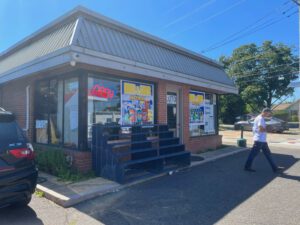 While it does appear that everyone but the oil companies are making concessions, our local gas station owners are thankful that there is more to their businesses than just pumping gas – and that is what’s keeping them afloat.
While it does appear that everyone but the oil companies are making concessions, our local gas station owners are thankful that there is more to their businesses than just pumping gas – and that is what’s keeping them afloat.
“I would be 6 floors under if it was just a gas station operating itself and I’d be 5 floors under if the customer service wasn’t the same. The store is helping me out and my customer service is helping me out,” explains Bentaleb, whose station offers a convenience store as well as gas. “Our gas station is completely different. You come here, we offer you water (for free, of course) and we talk to our customers. We don’t just fill up and go – because it’s a family business. We treat you the right way because it’s our business.”
 If it’s just gas you want, Rosso admits local station owners will never be able to compete with the prices you can find at places like Wawa or Costco. But, he shares, as long as locals continue to trust him with their car care needs, his shop is what keeps his doors open.
If it’s just gas you want, Rosso admits local station owners will never be able to compete with the prices you can find at places like Wawa or Costco. But, he shares, as long as locals continue to trust him with their car care needs, his shop is what keeps his doors open.
Providing what your customers need and making them feel welcome is essential for business. And customer loyalty is a big part of what keeps these local businesses open. If you don’t have a regular spot and simply need to find the best option around, there are apps and websites such as GasBuddy which allow you to see local gas prices. If you put in “08540” you’ll immediately be presented with a list of nine gas stations in our area – around Princeton, in Skillman and Kendall Park. You can also click “view map” to see where these locations are in proximity to you.
Until long term relief comes at the pump, remember this…though gas prices hit an all-time high this summer, we thought we’d seen what would be the highest ever back in July 2008, when gas prices averaged $4.10. We never thought we’d welcome back prices like that!
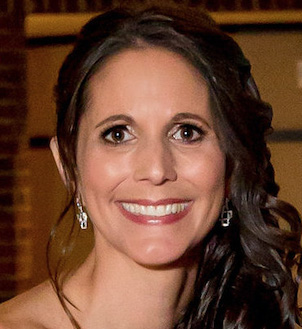
Lisa Jacknow spent years working in national and local news in and around New York City before moving to Princeton. Working as both a TV producer and news reporter, Lisa came to this area to focus on the local news of Mercer County at WZBN-TV. In recent years, she got immersed in the Princeton community by serving leadership roles at local schools in addition to volunteering for other local non-profits. In her free time, Lisa loves to spend time with her family, play tennis, sing and play the piano. A graduate of the S. I. Newhouse School of Public Communications at Syracuse University, Lisa was raised just north of Boston, Massachusetts but has lived in the tri-state area since college. She is excited to be Editor and head writer for Princeton Perspectives!

 Are you living your life, perhaps noticing rising costs but still spending? Or perhaps you’re making more conscious choices about what you need versus what you want? Maybe you have stopped eating out and are now working on a strict shopping list and budget when you get to the market? While some are being forced to make choices between what they need today and what they must go without.
Are you living your life, perhaps noticing rising costs but still spending? Or perhaps you’re making more conscious choices about what you need versus what you want? Maybe you have stopped eating out and are now working on a strict shopping list and budget when you get to the market? While some are being forced to make choices between what they need today and what they must go without. Princeton is lucky to be located in the midst of several farms, some that offer their own farm stands and others that take their weekly crop and sell it to you at organized markets. Though not a comprehensive list, there are several farms nearby you could pop into for on-site shopping. By purchasing what’s in season, and not necessarily what you typically buy week-to-week, you can experience something new and save a little money in the meantime. Buying seconds (the not-so-pretty produce) and shopping just before closing can also help you score great items for less. A few farm markets in the area include:
Princeton is lucky to be located in the midst of several farms, some that offer their own farm stands and others that take their weekly crop and sell it to you at organized markets. Though not a comprehensive list, there are several farms nearby you could pop into for on-site shopping. By purchasing what’s in season, and not necessarily what you typically buy week-to-week, you can experience something new and save a little money in the meantime. Buying seconds (the not-so-pretty produce) and shopping just before closing can also help you score great items for less. A few farm markets in the area include: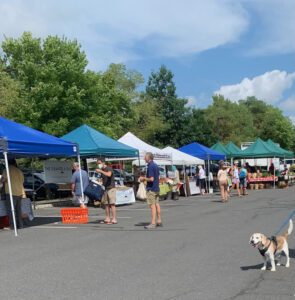 Every Thursday, the Dinky Train Station lot off Alexander Road becomes home to the
Every Thursday, the Dinky Train Station lot off Alexander Road becomes home to the  Beach tags this season range in price. Some of the most popular destinations from Princeton, such as along Long Beach Island and at Point Pleasant will cost you $10/day while Spring Lake and Lavalette are up to $12. Thanks to Gov. Phil Murphy’s decision to make NJ state parks, beaches, forests and recreational areas free again this summer,
Beach tags this season range in price. Some of the most popular destinations from Princeton, such as along Long Beach Island and at Point Pleasant will cost you $10/day while Spring Lake and Lavalette are up to $12. Thanks to Gov. Phil Murphy’s decision to make NJ state parks, beaches, forests and recreational areas free again this summer,  Why not make it a Philly day? There are so many opportunities to learn about people and the past all around Independence Mall. After being closed for over two years due to the pandemic, the newly reimagined Weitzman National Museum of American Jewish History reopened in May. You must register to visit Thursdays to Sundays, but the museum is offering free general admission to everyone! While in the area, take a walk past the Liberty Bell. This historic artifact can be seen at no cost, but you may have to wait your turn in line (so get there early). You can also enter Independence Hall (and get a guided tour) for free, but tickets are first-come first-served and only a limited number of tickets are given for each tour, so this also requires an early start (ticketing begins at 8:30am). For the summer, however, between 5-7pm there are no tickets required for the tour! Additionally, the nearby Philadelphia Art Museum is pay-what-you-wish the first Monday of the month and every Friday evening.
Why not make it a Philly day? There are so many opportunities to learn about people and the past all around Independence Mall. After being closed for over two years due to the pandemic, the newly reimagined Weitzman National Museum of American Jewish History reopened in May. You must register to visit Thursdays to Sundays, but the museum is offering free general admission to everyone! While in the area, take a walk past the Liberty Bell. This historic artifact can be seen at no cost, but you may have to wait your turn in line (so get there early). You can also enter Independence Hall (and get a guided tour) for free, but tickets are first-come first-served and only a limited number of tickets are given for each tour, so this also requires an early start (ticketing begins at 8:30am). For the summer, however, between 5-7pm there are no tickets required for the tour! Additionally, the nearby Philadelphia Art Museum is pay-what-you-wish the first Monday of the month and every Friday evening. Look up to the sky…on Tuesday August 23rd beginning at 11am, the performers for the
Look up to the sky…on Tuesday August 23rd beginning at 11am, the performers for the 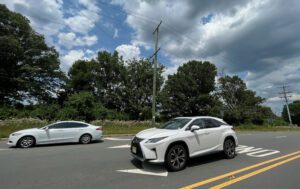 For most, summer flows at a different pace than the rest of the year. Schools are out, summer camps are in, and many families use this time to take a vacation or time off to enjoy loved ones and the weather. Summer is also a time that more people spend outdoors rather than cooped up inside, which means people notice a lot more of what’s going on around them.
For most, summer flows at a different pace than the rest of the year. Schools are out, summer camps are in, and many families use this time to take a vacation or time off to enjoy loved ones and the weather. Summer is also a time that more people spend outdoors rather than cooped up inside, which means people notice a lot more of what’s going on around them. Have you noticed many new things while working from home, such as birds chirping, lawn machines roaring or your neighbors habits? Working from home rather than commuting to an office also means that residents are often on the roadways at times that differ from traditional rush hour. This not only creates changes in traffic patterns, but it also causes people to be around to see things they may not have seen as often in the past. In January, in the article
Have you noticed many new things while working from home, such as birds chirping, lawn machines roaring or your neighbors habits? Working from home rather than commuting to an office also means that residents are often on the roadways at times that differ from traditional rush hour. This not only creates changes in traffic patterns, but it also causes people to be around to see things they may not have seen as often in the past. In January, in the article 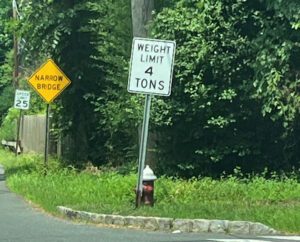 “There’s a 4-ton weight limit, however the ordinances have exceptions if that load is going to or from a local roadway,” Sgt. Murray explains. “Terhune Rd, for example. Terhune has a 4-ton weight limit, but those trucks are exempt because of the construction site at Terhune and Thanet. And, you have to allow them to get to that roadway.”
“There’s a 4-ton weight limit, however the ordinances have exceptions if that load is going to or from a local roadway,” Sgt. Murray explains. “Terhune Rd, for example. Terhune has a 4-ton weight limit, but those trucks are exempt because of the construction site at Terhune and Thanet. And, you have to allow them to get to that roadway.” While it may appear that more trucks are traveling along State Highway 206 or through Nassau Street/NJ Rt. 27 as well, Murray suggests it may simply be that more eyes are out and about spotting them. Princeton also is unique in the fact that there is no bypass around town. So, there aren’t many other options to travel from North to South and vice versa.
While it may appear that more trucks are traveling along State Highway 206 or through Nassau Street/NJ Rt. 27 as well, Murray suggests it may simply be that more eyes are out and about spotting them. Princeton also is unique in the fact that there is no bypass around town. So, there aren’t many other options to travel from North to South and vice versa.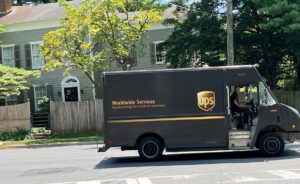 “There’s definitely been an increase in smaller vehicles like
“There’s definitely been an increase in smaller vehicles like  Traffic consultants, focusing on peak periods of the day, indicated they expect approximately 75% of the traffic to travel on Quakerbridge Road and Route 1. 25% of the traffic is anticipated to flow on Clarksville Road, though concerns have been voiced those trucks will take it to use 571 to the NJ Turnpike. The study focused on rush hour periods and cited an estimated influx of 60 trucks in the morning and 90 in the evening during phase 1 of the project.
Traffic consultants, focusing on peak periods of the day, indicated they expect approximately 75% of the traffic to travel on Quakerbridge Road and Route 1. 25% of the traffic is anticipated to flow on Clarksville Road, though concerns have been voiced those trucks will take it to use 571 to the NJ Turnpike. The study focused on rush hour periods and cited an estimated influx of 60 trucks in the morning and 90 in the evening during phase 1 of the project.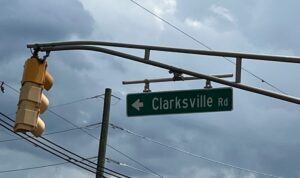
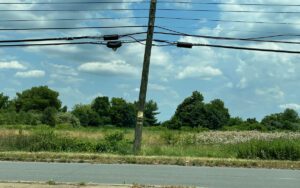 Traffic was only part of the concerns voiced by many West Windsor residents who pushed back against the approval. Environmental impacts to the town were also highlighted. The property under consideration has been a constant point of discussion for the past 30 years, with past possibilities including relocation of Quakerbridge Mall or Princeton Hospital. All previous ideas were rejected.
Traffic was only part of the concerns voiced by many West Windsor residents who pushed back against the approval. Environmental impacts to the town were also highlighted. The property under consideration has been a constant point of discussion for the past 30 years, with past possibilities including relocation of Quakerbridge Mall or Princeton Hospital. All previous ideas were rejected.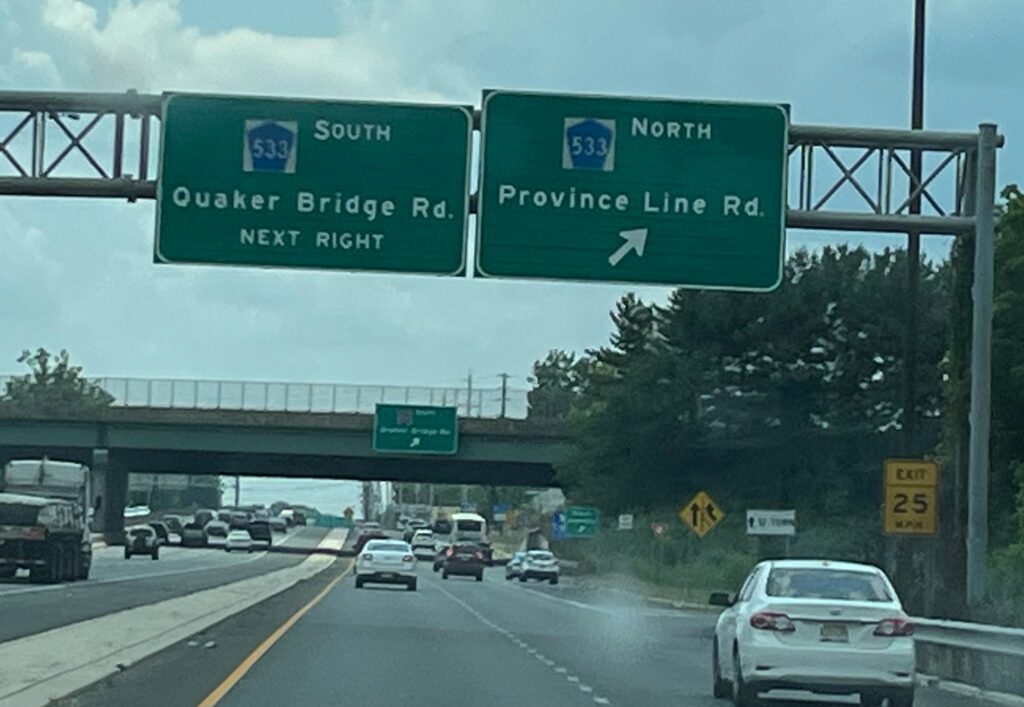 Marathe expects trucks will take the shortest route, therefore coming from the port near Newark Airport most will often take the NJ Turnpike to Route 18 to Route 1, while those coming from Delaware or Philadelphia will likely travel 295 to Route 1, limiting the truck traffic through town. But residents like Schectel worry the county may not put in all the proper measures to limit through-town travel, such as prohibiting a left turn from Clarksville Rd. onto Rt. 571.
Marathe expects trucks will take the shortest route, therefore coming from the port near Newark Airport most will often take the NJ Turnpike to Route 18 to Route 1, while those coming from Delaware or Philadelphia will likely travel 295 to Route 1, limiting the truck traffic through town. But residents like Schectel worry the county may not put in all the proper measures to limit through-town travel, such as prohibiting a left turn from Clarksville Rd. onto Rt. 571.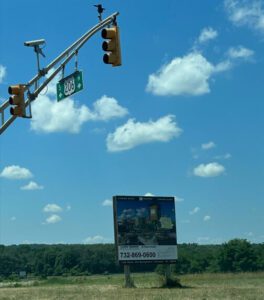 If you’ve driven north on State Highway 206 out of Princeton into Montgomery, you’ve likely seen signs for new shopping plazas for years and a lot of active construction. The first, just north of the Princeton Airport, has long been anticipated, but nothing yet has been noticeably done on the site.
If you’ve driven north on State Highway 206 out of Princeton into Montgomery, you’ve likely seen signs for new shopping plazas for years and a lot of active construction. The first, just north of the Princeton Airport, has long been anticipated, but nothing yet has been noticeably done on the site. When completed, there will be 62,00 square feet of retail and restaurant space at Village Walk, behind which 52 residential apartments are being built. Residents of these apartments will have their own parking area and can come and go from either loop road.
When completed, there will be 62,00 square feet of retail and restaurant space at Village Walk, behind which 52 residential apartments are being built. Residents of these apartments will have their own parking area and can come and go from either loop road.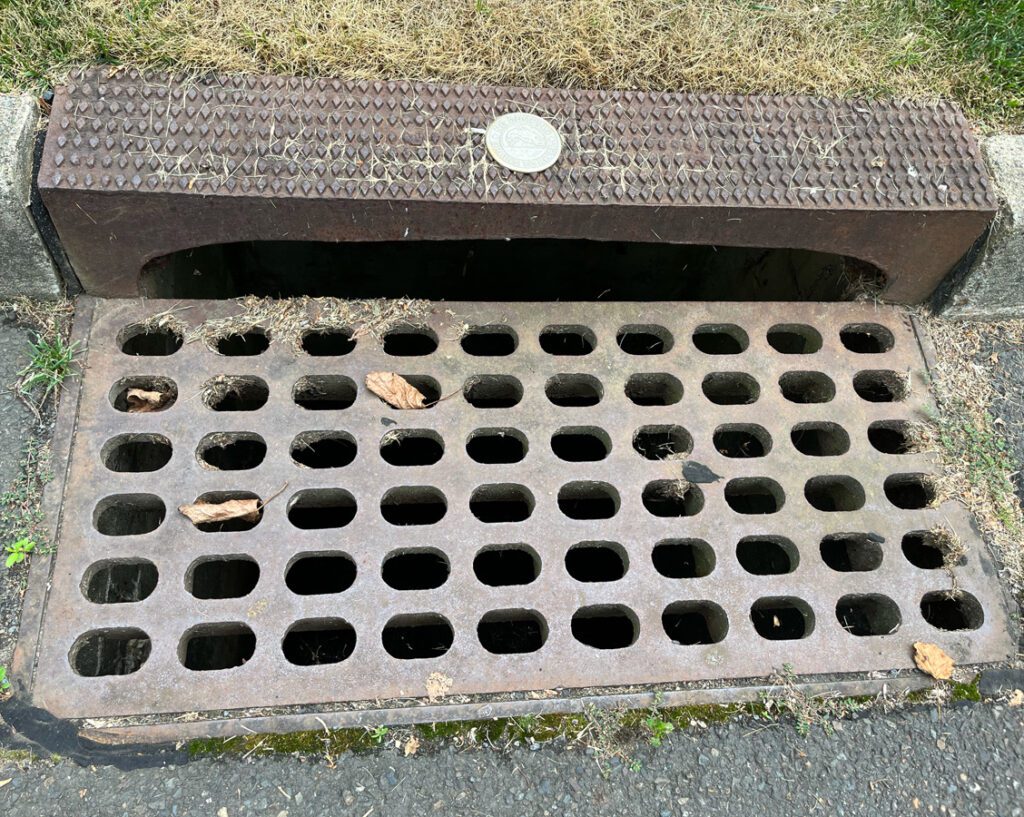 Mini systems, trunk lines, pump stations. You may not be familiar with these terms, but they all refer to aspects of our sewers. Most people don’t notice sewers (if they’re working right) as they’re not pretty or fun to talk about. But they are an essential part of many Princeton resident’s everyday lives. In fact, almost all homes outside of the northwest region of town are serviced by public sewers, that’s nearly 80% of Princeton homes. And while one may normally get bleary-eyed and tune out upon discussion of sewers, if you’re going to be paying for it, you may want to know what you’re paying for.
Mini systems, trunk lines, pump stations. You may not be familiar with these terms, but they all refer to aspects of our sewers. Most people don’t notice sewers (if they’re working right) as they’re not pretty or fun to talk about. But they are an essential part of many Princeton resident’s everyday lives. In fact, almost all homes outside of the northwest region of town are serviced by public sewers, that’s nearly 80% of Princeton homes. And while one may normally get bleary-eyed and tune out upon discussion of sewers, if you’re going to be paying for it, you may want to know what you’re paying for.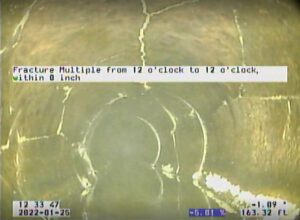 If the sewers aren’t kept in tip-top shape, that could lead to unnecessary problems and expenses. It’s recently been assessed that leaks in the pipes (which are intended to be water-tight) are allowing rainwater and groundwater to seep into the sewer system and 40-50% of the total flow is coming from that unwanted water. That means local sewer users are paying to treat water they are not generating. Deferred maintenance and age (Princeton’s system is significantly older than our neighboring communities) got us to today, where many parts of the Princeton sewer system need to be addressed. It appears some things hadn’t been tended to properly in the past, but today’s municipal administrator and staff are keenly on top of what’s wrong and needs to be done.
If the sewers aren’t kept in tip-top shape, that could lead to unnecessary problems and expenses. It’s recently been assessed that leaks in the pipes (which are intended to be water-tight) are allowing rainwater and groundwater to seep into the sewer system and 40-50% of the total flow is coming from that unwanted water. That means local sewer users are paying to treat water they are not generating. Deferred maintenance and age (Princeton’s system is significantly older than our neighboring communities) got us to today, where many parts of the Princeton sewer system need to be addressed. It appears some things hadn’t been tended to properly in the past, but today’s municipal administrator and staff are keenly on top of what’s wrong and needs to be done.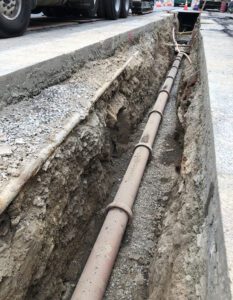 The 2022 fee for the average single-family sewer user in Princeton is $435. If things go as planned, every year until 2031, that bill will increase approximately $40-50 to cover debt service and operations and maintenance needs, which will be in addition to the
The 2022 fee for the average single-family sewer user in Princeton is $435. If things go as planned, every year until 2031, that bill will increase approximately $40-50 to cover debt service and operations and maintenance needs, which will be in addition to the  Last month Council approved approximately $5m in capital for 2022 sewer projects. Over the next month or two, pump stations across town that are near or have reached their end of life are being analyzed to figure out the best technological options for replacement. The six included are All Saints, Crooked Tree, Herrontown, Mercer, Winfield and Pretty Brook. Once analyzed, a full design and specifications will be configured with hopes of being ready to award a contract later next year.
Last month Council approved approximately $5m in capital for 2022 sewer projects. Over the next month or two, pump stations across town that are near or have reached their end of life are being analyzed to figure out the best technological options for replacement. The six included are All Saints, Crooked Tree, Herrontown, Mercer, Winfield and Pretty Brook. Once analyzed, a full design and specifications will be configured with hopes of being ready to award a contract later next year.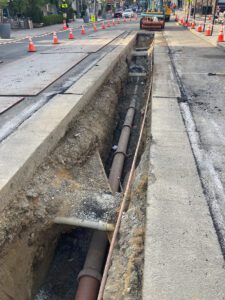 As the
As the 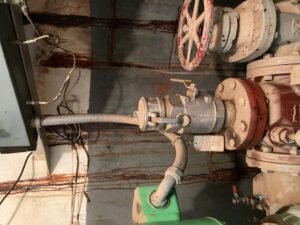 Using flow-metering data from 2017-2019, the sewer department is also now figuring out which areas of town need to be rehabilitated first and this will be the basis of the next 6-year plan. While the rehabilitations and repairs take place, you may encounter some roadway and household disruptions, but they’ll likely pale in comparison to what could be, should the town not take these actions. And now, going forward, you’ll think about and be grateful for updated mini systems, pump stations and trunk lines each time you flush your toilet.
Using flow-metering data from 2017-2019, the sewer department is also now figuring out which areas of town need to be rehabilitated first and this will be the basis of the next 6-year plan. While the rehabilitations and repairs take place, you may encounter some roadway and household disruptions, but they’ll likely pale in comparison to what could be, should the town not take these actions. And now, going forward, you’ll think about and be grateful for updated mini systems, pump stations and trunk lines each time you flush your toilet. Has it been a bit challenging lately to find your calm? Chances are high you could name five people you know who have had COVID in the past month. It sometimes feels like it’s spreading like wildfire. Despite the most careful following of safety protocols by some, they are getting it, too. Similarly, if you have money invested in the stock market, it can be harrowing to watch it hit new lows day after day, even if you take great care to invest responsibly.
Has it been a bit challenging lately to find your calm? Chances are high you could name five people you know who have had COVID in the past month. It sometimes feels like it’s spreading like wildfire. Despite the most careful following of safety protocols by some, they are getting it, too. Similarly, if you have money invested in the stock market, it can be harrowing to watch it hit new lows day after day, even if you take great care to invest responsibly. Music is known to have many benefits. It can reduce stress, enhance your mood, increase your adrenaline and more. And the best news is that you can often access music at your leisure to reap such rewards. Listening to your procured playlist is one option, but in the Princeton area, there are a myriad of ways to listen to, perform or be entertained with live music. As summer 2022 kicks off, take some control of your desires and engage in music through one of many local offerings.
Music is known to have many benefits. It can reduce stress, enhance your mood, increase your adrenaline and more. And the best news is that you can often access music at your leisure to reap such rewards. Listening to your procured playlist is one option, but in the Princeton area, there are a myriad of ways to listen to, perform or be entertained with live music. As summer 2022 kicks off, take some control of your desires and engage in music through one of many local offerings.

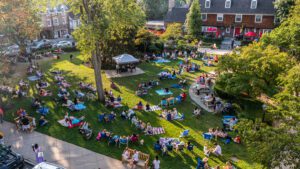 The
The 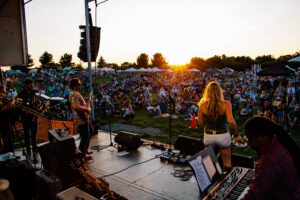
 The festival also provides an opportunity for people to get to know the Sourland Mountain area, with historians and geologists on site as well as a “Cool Critters” area to get to learn about the animals of the Sourlands.
The festival also provides an opportunity for people to get to know the Sourland Mountain area, with historians and geologists on site as well as a “Cool Critters” area to get to learn about the animals of the Sourlands. Last month, baritone Jean Bernard Cerin and Néron (pianist) entertained supporters in a private Princeton home to celebrate the organization’s founding. A Celebration of the Art Song from Haiti shared the talents of Cerin and Néron while tracing the flow of Haitian music through various times and places. This was the third FAS event in the Princeton area. A benefit concert featuring tenor Paul Appleby, soprano Bridgette Gan, and baritones Elem Eley and Scott Johnson was held Labor Day weekend 2021, and the first Songs from Outside the Box concert was performed October in collaboration with
Last month, baritone Jean Bernard Cerin and Néron (pianist) entertained supporters in a private Princeton home to celebrate the organization’s founding. A Celebration of the Art Song from Haiti shared the talents of Cerin and Néron while tracing the flow of Haitian music through various times and places. This was the third FAS event in the Princeton area. A benefit concert featuring tenor Paul Appleby, soprano Bridgette Gan, and baritones Elem Eley and Scott Johnson was held Labor Day weekend 2021, and the first Songs from Outside the Box concert was performed October in collaboration with 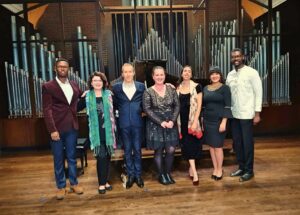 “FAS is about collaborations, and associations. We wish to work together with other organizations in order to further our mission: to educate the public on the expanding catalogue of song repertoire from a multitude of sources and communities, thus benefiting audiences and artists alike,” Néron adds.
“FAS is about collaborations, and associations. We wish to work together with other organizations in order to further our mission: to educate the public on the expanding catalogue of song repertoire from a multitude of sources and communities, thus benefiting audiences and artists alike,” Néron adds. Budding artists, who may someday find themselves on the stage at one of the above festivals, are honing their skills now as part of
Budding artists, who may someday find themselves on the stage at one of the above festivals, are honing their skills now as part of  “In addition, Princeton Boychoir has appeared on NBC with Michael Bublé in his 2021 Christmas in the City special, at the Baltimore Boychoir Festival, the International Boy’s and Men’s Choral Festival in Arizona, and will make their international debut in Prague and Vienna in 2022,” notes Sienicki.
“In addition, Princeton Boychoir has appeared on NBC with Michael Bublé in his 2021 Christmas in the City special, at the Baltimore Boychoir Festival, the International Boy’s and Men’s Choral Festival in Arizona, and will make their international debut in Prague and Vienna in 2022,” notes Sienicki. “There are no strangers here; Only friends you haven’t yet met.” – William Butler Yeats
“There are no strangers here; Only friends you haven’t yet met.” – William Butler Yeats If you are good with technology,
If you are good with technology, 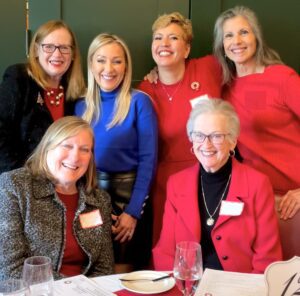 If you’re comfortable with joining a club to open some new doors, there are many connections that can be made. Back in 1898, a group of Princeton-area women that wanted to come together to engage in cultural and intellectual activities with like-minded people founded
If you’re comfortable with joining a club to open some new doors, there are many connections that can be made. Back in 1898, a group of Princeton-area women that wanted to come together to engage in cultural and intellectual activities with like-minded people founded  Beyond the lectures, the club has expanded to form interest groups like bridge, current events, photography and more. Day trips to the theater or guided tours at museums are also a regular occurrence. And of course, there are celebratory parties at their clubhouse. You may have driven by it often and not realized, but the home at 72 Stockton Street was purchased in 1930 and has since been The Present Day Club’s permanent space.
Beyond the lectures, the club has expanded to form interest groups like bridge, current events, photography and more. Day trips to the theater or guided tours at museums are also a regular occurrence. And of course, there are celebratory parties at their clubhouse. You may have driven by it often and not realized, but the home at 72 Stockton Street was purchased in 1930 and has since been The Present Day Club’s permanent space.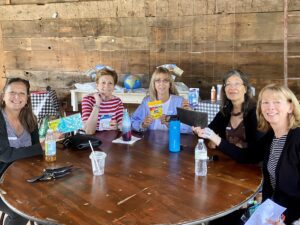 “The main change to the founding ‘rules’ is that there is no longer a two-year maximum time of joining. In fact, we have members who have belonged for over a decade and some who left the area only to come back at a future date and join again,” explains Cathylee Healy, NC&F Marketing VP. “We invite women to ‘check us out’ prior to joining. They are welcome to come to a Social Coffee event, a Friday with Friend event and to try one Interest group gathering.”
“The main change to the founding ‘rules’ is that there is no longer a two-year maximum time of joining. In fact, we have members who have belonged for over a decade and some who left the area only to come back at a future date and join again,” explains Cathylee Healy, NC&F Marketing VP. “We invite women to ‘check us out’ prior to joining. They are welcome to come to a Social Coffee event, a Friday with Friend event and to try one Interest group gathering.”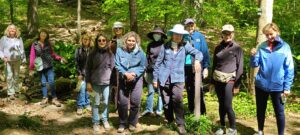 “During the year of the pandemic, 1/3 of the membership volunteered to lead others in the organization’s and the YWCA’s endeavors. We shared programs on Historic Princeton, The Female Supreme Court Justices, and the differences between stereotypes and useful generalizations. We led hikes, walks, bike rides and virtual explorations of towns and cities. We played bridge, mahjong, pickleball, golf and solved mind benders and puzzles. We read a wide variety of authors, watched and discussed films of cultural diversity and studied some the most challenging of current affairs,” shares member Donna W. “I am grateful for the growth this organization has generated in me and the beloved and trusted lifelong friends I have found here.”
“During the year of the pandemic, 1/3 of the membership volunteered to lead others in the organization’s and the YWCA’s endeavors. We shared programs on Historic Princeton, The Female Supreme Court Justices, and the differences between stereotypes and useful generalizations. We led hikes, walks, bike rides and virtual explorations of towns and cities. We played bridge, mahjong, pickleball, golf and solved mind benders and puzzles. We read a wide variety of authors, watched and discussed films of cultural diversity and studied some the most challenging of current affairs,” shares member Donna W. “I am grateful for the growth this organization has generated in me and the beloved and trusted lifelong friends I have found here.” For men and women looking for community, both can find it in a downtown location that just opened last month. Inside Nelson Glass House on Spring Street,
For men and women looking for community, both can find it in a downtown location that just opened last month. Inside Nelson Glass House on Spring Street,  Members can take advantage of the coffee and enjoy the cigars from a private humidor inside the club, but it also has a bar for camaraderie, a den and library for like-minded people to find each other and relax, think and enjoy civility. Lastly, The House is a place for adventurers, where guests can plan for a motorcycle ride, Iron Chef dinners or a master class.
Members can take advantage of the coffee and enjoy the cigars from a private humidor inside the club, but it also has a bar for camaraderie, a den and library for like-minded people to find each other and relax, think and enjoy civility. Lastly, The House is a place for adventurers, where guests can plan for a motorcycle ride, Iron Chef dinners or a master class. “I was the first person in the Chinese community to run the half marathon. Then in 2016 there were a few people that finished. Now, from that group, there are already 3 Ironman completers,” says Wu. “It’s a little to my surprise, I didn’t expect a lot of people to be persistent with it. This is now the 7th year. We started with around 10 people, then the word spread attracting runners and walkers who usually go out on Saturday and Sunday morning to run or walk along the canal.”
“I was the first person in the Chinese community to run the half marathon. Then in 2016 there were a few people that finished. Now, from that group, there are already 3 Ironman completers,” says Wu. “It’s a little to my surprise, I didn’t expect a lot of people to be persistent with it. This is now the 7th year. We started with around 10 people, then the word spread attracting runners and walkers who usually go out on Saturday and Sunday morning to run or walk along the canal.”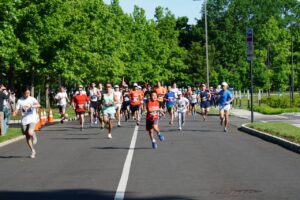 From arranging regular meetups through WeChat, the group easily began sharing pictures of their runs and lives. They began talking about their families and gathering for parties throughout the years as well. And, as members of the local Chinese community, started discussing ways to better integrate with the rest of Princeton. This past Memorial Day weekend, Princeton Running Team held its first formal event, the
From arranging regular meetups through WeChat, the group easily began sharing pictures of their runs and lives. They began talking about their families and gathering for parties throughout the years as well. And, as members of the local Chinese community, started discussing ways to better integrate with the rest of Princeton. This past Memorial Day weekend, Princeton Running Team held its first formal event, the  “Pickleball is the only sport we know that does not discriminate against gender, body size/type or age. It is a cross between tennis, badminton and ping pong,” details Sharon Voelzke, co-owner of
“Pickleball is the only sport we know that does not discriminate against gender, body size/type or age. It is a cross between tennis, badminton and ping pong,” details Sharon Voelzke, co-owner of 